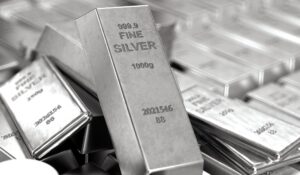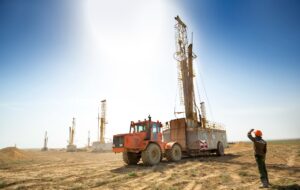Subscribe for Investment Insights. Stay Ahead.
Investment market and industry insights delivered to you in real-time.
Louis O Connor , founder of Strategic Metals Invest. The world’s first marketplace for private investors to physically own rare earths. Our private clients also have access to our logistics and distribution platform where the raw materials can be liquidated to one of our more than 4,000 clients in 74 different countries.
Rare Earth Metals have been making global headlines in 2025 and with good reason. As the world pivots from oil to metals, rare earths are the new front line in geopolitical decisions. Demand for rare earths is increasing, and interestingly, this demand is also being institutionalized as we de-globalize and move to permanent resource nationalism.
Rare Earths are not always rare, but what can be rare is factual knowledge. Let us take a discerning dive and see what the experts along the entire value chain have to say, from geologists to suppliers, manufacturers, end users, and even investment possibilities.
Geologists call them “trace” metals because they rarely occur in concentrated deposits within the Earth’s crust. They are always found and recovered as a byproduct of another raw material. There are 17 rare earths, all chemically similar, so they must be extracted, separated, and remetallized to high-purity levels. One could say it is more about metallurgy than mining. One could also say they are more like specialty chemicals than metals. This process of metallurgy is what makes them complicated, “messy, and expensive to recover.
In addition to all of that, there are four of the seventeen, Dysprosium, Neodymium, Praseodymium, and Terbium, that are the most in demand, found in the least concentrations, and have the most applications. All have a heavy supply (China) concentration risk. These four are the ones to watch from an investment perspective, as they regularly experience “scarcity-driven” price increases.
Manufacturers call them the “spice “metals because of the low concentrations in final applications. For example, a smartphone contains between twelve and thirteen types of technology and various rare earth metals.
Indium enables us to swipe and scroll, yet it represents a tiny portion of the entire product. The Neodymium in the small magnet in the speaker may represent only 0.1% of the makeup. However, Neodymium is a critical component and an irreplicable material in magnets for smartphones, electric cars, and wind turbines.
AI relies on data but requires rare earths for the magnets, sensors, and computer chips that power its servers. There are estimated to be 800lbs of rare earths in one F-35 fighter jet.
When there are scarcity-driven price increases, manufacturers absorb the costs, as it would be more catastrophic for the production of the iPhone to shut down than to pay a 100% increase in price for a material that represents less than 1% of the overall composition.
Investors call them “profitable” because the scarcity-driven price increases are real, and demand is constantly increasing.
Some recent examples include the 500% increase in Terbium (semiconductors) over three years, from 2020 to 2022.
Since April 4, 2025, China has restricted the export of seven rare earths as a countermeasure to the “liberation day” tariffs imposed by the US administration. No Dysprosium or Terbium has left China since April 4, and prices increased by 40% and 50%, respectively, in five days.
Currently, suppliers are bidding approximately double the price they were two months ago. There is an inflexibility, an inelasticity in supply, due to byproduct resource recovery, which results in price increases that manufacturers/industry buyers absorb without hesitation.
In the final analysis, here are some of the more interesting factual key points:
- There is a supply concentration risk as China has an unrivalled dominance in the market. With a 25-year head start and a trillion-dollar investment, China will likely continue to dominate for some time to come.
- Demand is not only rising, but also being institutionalized by the emergence of resource nationalism.
- Demand drivers for the next 15 years will include the energy transition, technology, defense, aviation, space, digitalization, AI, and, crucially, strategic stockpiling by nation-states and corporations.
- There is a notable inelasticity in supply where investors can profit. A new technology on the market, a geopolitical decision or posturing, strategic stockpiling, export restrictions, or the weaponization of rare earths by China, could cause this.
- They can be bought and held as physical assets (see www.strategicmetalsinvest.com); however, unlike precious metals, the chain of custody is critical for resale and liquidation.
- It has been mathematically proven that if one purchased rare earths at any time during the last 15 years and held them for a minimum of three years, then one would have made gains.
In a world shifting from hydrocarbons to hard tech, rare earths aren’t just strategic, they are investable. The question isn’t if scarcity will impact supply chains. The question is: who’s positioned for when it does?
Photo credit: Heather Jacquart, MP Materials
Subscribe for Investment Insights. Stay Ahead.
Investment market and industry insights delivered to you in real-time.



















